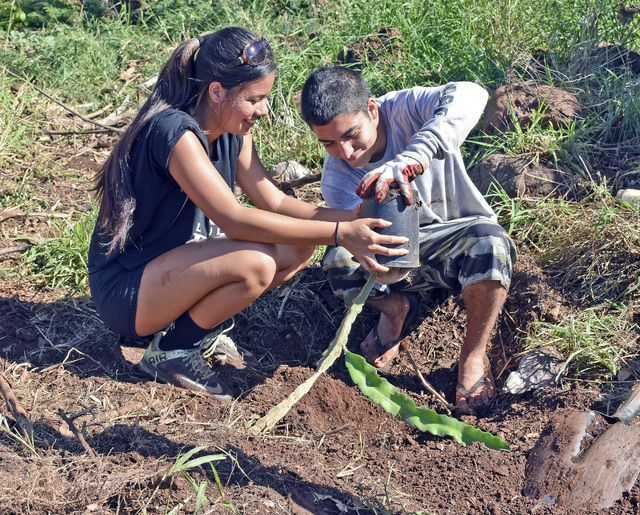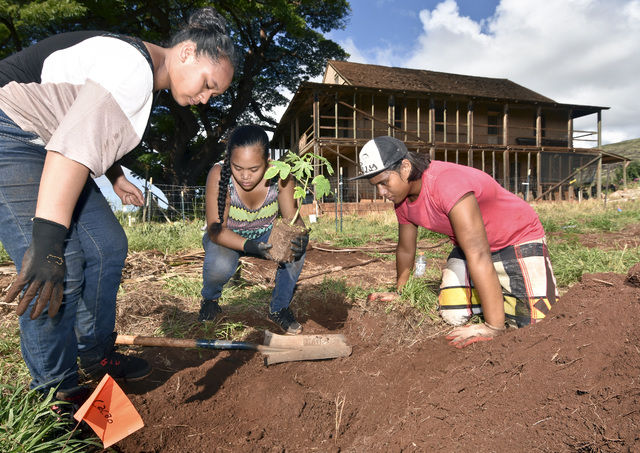WAIMEA — “Come on, guys, what is an I-M-O?” Alyssa Nishihira wanted to know Wednesday at the site of the Gulick-Rowell Mission House in Waimea. “Look it up, it’s in your journal,” piped a voice from the expanse of field
WAIMEA — “Come on, guys, what is an I-M-O?” Alyssa Nishihira wanted to know Wednesday at the site of the Gulick-Rowell Mission House in Waimea.
“Look it up, it’s in your journal,” piped a voice from the expanse of field being worked by teams of students from Waimea High School and Ke Kula O Niihau charter school.
Nishihira said it stands for “indigenous micro-organisms,” and that the replacement of micro-organisms into the environment helps sustainability.
“I don’t know too much about agriculture,” Nishihira said. “I came from healthcare and signed up. But the human body and the environment — they’re both ecosystems. It’s cool to learn to care for the land because it is part of caring for the body.”
Nishihara is one of 10 students, three from Ke Kula O Niihau and seven from Waimea High School, who spent the past three days working at the Gulick-Rowell Mission House site as part of a winter internship program headed by Clint Snyder of KUGA Agriculture.
“This Gulick-Rowell Mission House is nearly 200 years old,” Snyder said. “Eventually, plans are to have Aletha Kaohi and the Visitor Center move into the house. This has them excited. Today, under the winter internship orogram, the students are planting a diversified forest garden. There are a lot of trees, and there will be other plants added. Everything is done with sustainability concepts.”
Nishihira said during the internship, each day started with an educational component with lessons led by Snyder. What follows is hands-on application.
“We planted 18 trees Tuesday,” Nishihara said. “This include ulu, noni, fig, avocado, and assorted citrus. Everything was placed based on the relationship of the plant to the wind and sun.”
The trio of Kelly Kahokuloa, Abby Shintani and Ioane Duarte from Ke Kula O Niihau were busy sizing a hole where a papaya seedling would be planted.
“This is pretty good,” Shintani said. “We learn to plant better to create a better environment. What we learned over the past two days helps a lot because we have a school garden and we can use what we learned to better that garden.”
A crew of four — Zyon Kaneakua, Kenji Toyofuku, Java Kona, and Tevin Vidinha-Flores — were completing a “soil conditioning” program.
“This is good stuff,” Vidinha-Flores said. “Today, we get paid! When the fruit trees start bearing fruit, I’ll be back.”




